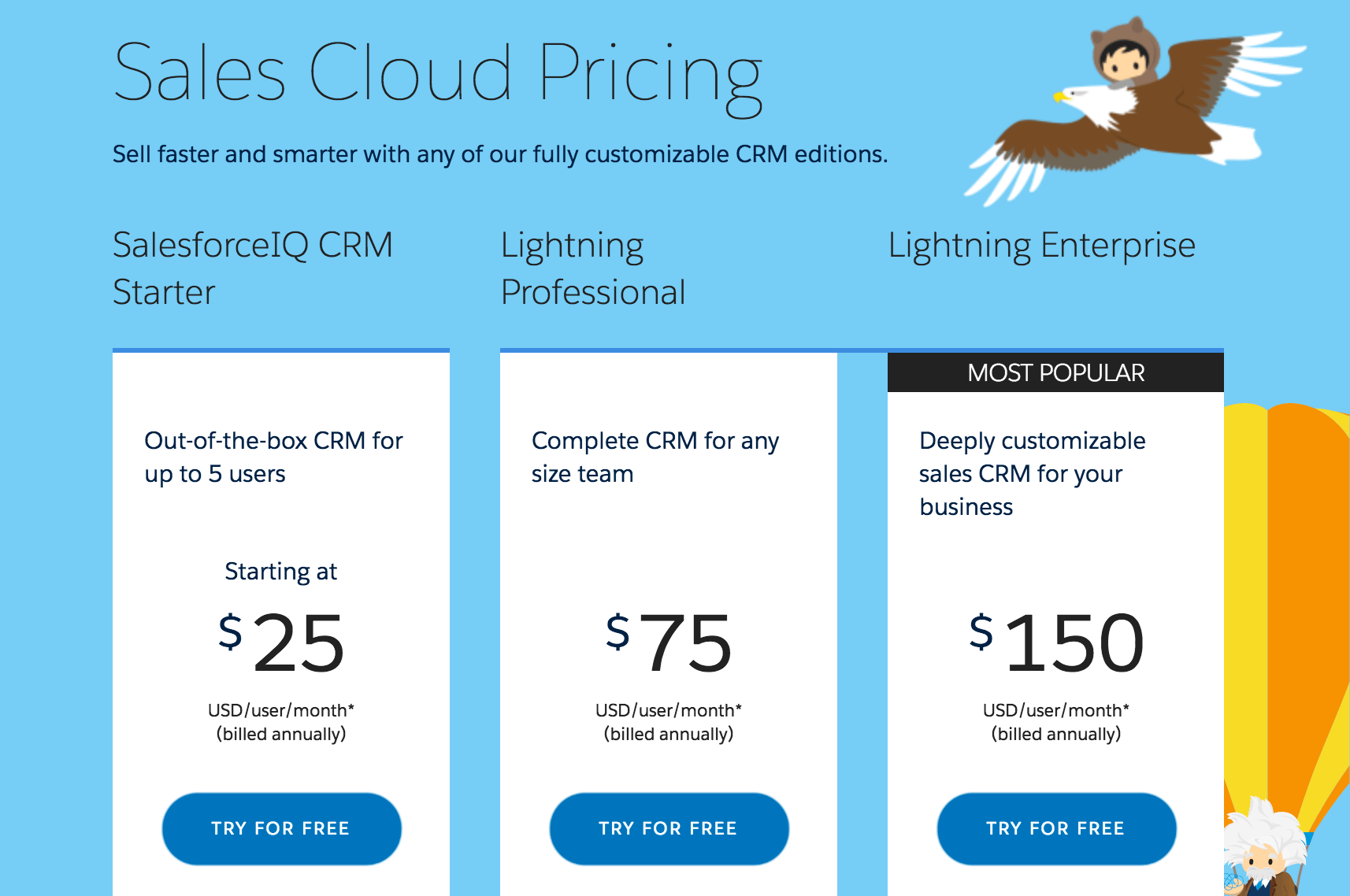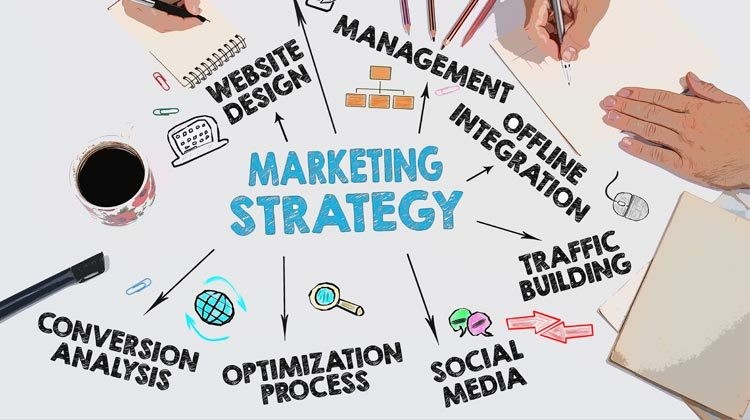Getting Started with Online Marketing: A Practical Guide
by Aden Andrus • January 6, 2018
Online marketing, digital advertising, internet marketing…whatever name you choose to use, marketing your company online is a great way to grow your business. After all, internet usage has doubled over the past decade—massively changing how people purchase products and interact with companies across the globe.
But what is online marketing? Well, online marketing is like any other type of marketing—it’s a way to connect with and influence your potential customers. The real difference is, you connect with and influence those customers online.
What is Online Marketing?
Basically, online marketing refers to any online marketing efforts or assets. Email marketing, pay-per-click advertising, social media marketing and even blogging are all great examples of online marketing—they help introduce people to your company and convince them to buy.
Here are some of the most common online marketing assets and strategies businesses use to reach people online:
Online Marketing Assets
Almost anything can be a online marketing asset. It simply needs to be a marketing tool you use online. That being said, many people don’t realize how many online marketing assets they have at their disposal. Here are just a few examples:
- Your website
- Branded assets (logos, icons, acronyms, etc)
- Video content (video ads, product demos, etc)
- Images (infographics, product shots, company photos, etc)
- Written content (blog posts, eBooks, product descriptions, testimonials, etc)
- Online products or tools (SaaS, calculators, interactive content, etc)
- Reviews
- Social media pages
As you can probably imagine, this list just scratches the surface. Most online marketing assets will fall into one of these categories, but clever marketers are constantly coming up with new ways to reach customers online, so the list keeps growing!
Online Marketing Strategies
The list of online marketing strategies is also constantly evolving, but here are some of the strategies most businesses are using:
Pay-Per-Click Advertising
Pay-per-click (PPC) advertising is actually a broad term that covers any type of online marketing where you pay for every user who clicks on an ad. For example, Google AdWords is a form of PPC advertising called “paid search advertising” (which we’ll go over in a second). Facebook Ads are another form of PPC advertising called “paid social media advertising” (again, we’ll get into that shortly).
Paid Search Advertising
Google, Bing and Yahoo all allow you to run text ads on their Search Engine Results Pages (SERPs). Paid search advertising is one of the best ways to target potential customers who are actively searching for a product or service like yours.
Search Engine Optimization (SEO)
If you don’t want to pay to show up in the SERPs, you can also use search engine optimization (SEO) to try and rank pages or blog posts on your site organically. You don’t have to pay directly for every click, but getting a page to rank usually takes quite a bit of time and effort (for a more in-depth comparison of paid search and SEO, check out this article).
Paid Social Media Advertising
Most social media platforms like Facebook, Instagram, Twitter, LinkedIn, Pinterest and Snapchat will allow you to run ads on their site. Paid social media advertising is great for building awareness with audiences that might not be aware that your business, product or service exists.
Social Media Marketing
Like SEO, social media marketing is the free, organic way to use social media platforms like Facebook or Twitter to market your business. And, just like SEO, organically marketing your business on social media takes a lot more time and effort, but in the long run, it can deliver much cheaper results.
Conversion Rate Optimization (CRO)
Conversion rate optimization (CRO) is the art and science of improving your online user experience. Most of the time, businesses use CRO to get more conversions (leads, chats, calls, sales, etc) out of their existing website traffic.
Content Marketing
Content marketing is another fairly broad online marketing term. Content marketing covers any online marketing effort that uses content assets (blog posts, infographics, eBooks, videos, etc) to build brand awareness or drive clicks, leads or sales.
Native Advertising
Ever get to the bottom of an article and see a list of suggested articles? That’s native advertising. Most native advertising falls under content marketing because it uses content to attract clicks (“you’ll never believe what happens next!”). Often, native advertising can be a bit hard to spot, since it is usually mixed in with non-paid content recommendations…but that’s kind of the point.
Email Marketing
Email marketing is the oldest form of online marketing and it’s still going strong. Most online marketers use email marketing to advertise special deals, highlight content (often as part of content marketing) or promote an event.
Affiliate Marketing
Affiliate marketing is essentially paying someone else (a person or a business) to promote your products and services on their website.
As you can see from the list above, there are a lot of different ways to market your business online, which is why many businesses either hire an agency to manage their online marketing efforts or pay for an in-house marketing team and marketing automation software to cover their marketing needs (for an in-depth comparison of these options, check out this article).
Does Online Marketing Work?
Online marketing is a great option for any business. At Disruptive, we’ve used online marketing to help all kinds of businesses grow—from mom-and-pop shops to internationally recognized universities and beyond. That’s the beauty of advertising online. If you know who you want to target, you can use online marketing to target anyone, anywhere.
However, that being said, certain types of businesses will benefit more from certain types of online advertising. As a quick overview, let’s take a look at which strategies tend to work best for business-to-consumer (B2C) companies and business-to-business (B2B) companies:
B2C Companies
Generally speaking, B2C companies have much lower price points than their B2B counterparts. After all, it can be a little hard to sell a $150,000 drill bit (believe me, they exist) to a harried mom. But a $10 pair of kids pants? That’s a fairly straightforward sell.
The good news is, because B2C companies aren’t trying to sell incredibly expensive products or services, they don’t need big sales teams or complicated marketing funnels. All they have to do is get their products or services in front of the right audience with the right messaging and the rest should take care of itself.
As a result, the primary goal of most B2C companies is to get people into and through their marketing funnel. For example, if you can get that harried mom onto your kids clothing website and offer her an exciting deal, there’s a good chance that she’ll buy today. You don’t need to build a ton of brand awareness or trust before you can close a sale.
With that in mind, B2C companies often see great results from higher-funnel marketing channels like social media marketing or paid social advertising. These channels do a great job of getting your business in front of potential customers who might not otherwise know that you exist.
Now, supplementing with other online marketing strategies like paid search or SEO is always a good idea, but if you have to pick one channel to start with, paid social advertising or social media marketing are great options for B2C.
B2B Companies
In contrast, paid search is a great option for B2B companies. Most B2B companies have very specific niche audiences that can be hard to target using social media. However, if you sell $150,000 drill bits and someone searches for “diamond-tipped oil drilling bit manufacturer”, you want to be the first result they see. Yes, you might pay more for your click than you would with paid social advertising, but with a $150,000 price tag, it’s money well spent.
In addition, most B2B companies have a much longer and more involved sales cycle than B2C companies. If you’re selling a $150,000 drill bit, most people probably don’t come to your site, give you a call and say “I want one.” As a result, longer-term strategies like content marketing or email marketing are often necessary to close a deal.
Of course, the right blend of online marketing tactics will vary from industry-to-industry and business-to-business, but simply comparing B2C to B2B should help give you a sense for how different strategies can be better for certain businesses. Not every strategy is right for every business, but with a little trial and error, you should be able to identify the most profitable approach for your company.
How Do I Get Started?
The good news is, getting started with online marketing is fairly easy. Most online advertising platforms make it easy to sign up and create your first campaign (it is how they make money, after all). Here are a few links to beginner guides for several different online marketing strategies:
- Paid search advertising
- Search engine optimization (SEO)
- Paid social media advertising
- Social media marketing
- Conversion rate optimization
- Content marketing
- Email marketing
The core of every successful online marketing campaign, however, isn’t a guide. Regardless of which strategies you choose to use, here are 4 questions you need to answer before you get started with online marketing:
1. How Much Do You Need to Make?
To figure out what you need to spend on online marketing, you first need to clarify what your goals are. How you approach online marketing can vary quite a bit depending on whether your ultimate goal is to drive clicks, conversions or leads, sales, revenue or a certain return-on-investment (ROI).
When you get right down to it, the ultimate goal of any marketing effort should be ROI. After all, if your online marketing spend isn’t driving profitable revenue for your business, why are you marketing online?
Clicks and even conversions are great, but your company doesn’t make money from clicks (in fact, you actually spend money on clicks) or conversions. It makes money from sales.
With that in mind, the first thing you need to determine before you decide what your online marketing budget should be is to decide how much revenue you want to drive. Once you know that, you can use that information to determine how much ad spend it will take to reach that revenue goal.
2. Who Are You Marketing To?
Once you know how much money you want to make from online marketing, you need to identify who you are marketing to. This is critical, because different buyer personas require different marketing tactics. And, even more importantly, different buyer personas turn into different types of buyers.
So guess what? If you don’t understand your buyer personas, you can’t create an effective online marketing strategy!
If you’ve got a sales team, talking to sales can be one of the fastest ways to get a decent buyer persona together. After all, they’re the ones who talk to your customers the most, right?
However, even talking to your sales team and doing a little research isn’t enough to really get at the level of detail you need to put together an effective online marketing plan. To do that, you need to get on the phone and call your actual customers.
Ask how they found you, why they converted and what convinced them to pay you. This information will give you a ton of insight into your marketing and sales process that you can use to both improve the performance of your advertising and choose your marketing budget.
3. What are Your Customers Worth?
Typically, people look at buyer personas as a good way to craft an effective marketing strategy. Buyer personas are great for this, but they are also an important part of putting together an effective online marketing plan.
For example, imagine you are advertising for a SaaS business called SaaS-A-Frass that has the following pricing structure:

In this situation, you’re probably targeting 3 different buyer personas:
- Small business “Steve”
- Mid-market business “Mandy”
- Enterprise business “Edward”
Small business “Steve” has much smaller and simpler business needs than Edward or Mandy, so he’ll probably choose the Starter package. Mandy will probably want the Professional package and Edward will likely need the Enterprise package.
Assuming that Steve, Mandy and Edward stick around for an average of 14 months, 4 years and 9 years, respectively (average lifetimes for a SaaS client) and buy 5, 20 and 100 licenses (again, respectively), here’s the lifetime value for each of these personas ( [licenses/mo] x [# of licenses] x [typical customer lifespan in months] ):
Lifetime Value
- Steve: $1,750
- Mandy: $72,000
- Edward: $1,590,000
These numbers look really exciting, but not all of that money is profit.
A normal SaaS company pays about 22% for fulfillment, 9% to sales and has a 40% overhead, leaving them with about 29% of the lifetime value of each client to play around with. That means to simply break even, SaaS-A-Frass has to spend less than the following to acquire a customer from Facebook:
Maximum Acquisition Cost
- Steve: $507.50
- Mandy: $20,880
- Edward: $461,100
If SaaS-A-Frass can keep their acquisition cost below this threshold, they’ll make money. If it costs more than this to acquire each of these customers, they’ll lose money.
See why buyer personas are so important to budgeting?
Of course, it’s unlikely that the market is saturated with Edwards, so SaaS-A-Frass will need a mix of these deals to hit their revenue goals. That mix will dictate their Facebook budget.
So, if SaaS-A-Frass is willing to spend $0.18 on marketing to produce $1.00 in lifetime value (for a 11% total profit margin), SaaS-A-Frass’s can afford to pay the following for each buyer persona:
Customer Acquisition Cost
- Steve: $315
- Mandy: $3,750
- Edward: $286,200
If SaaS-A-Frass can’t produce paying customers from a particular buyer persona at a price point below this threshold, they probably shouldn’t be marketing to that buyer persona.
However, if SaaS-A-Frass’s online marketing efforts are currently producing buyers from each persona at these CAC (or even a CAC below these thresholds), SaaS-A-Frass can use that information to then calculate their marketing budget.
4. How Much Do You Need to Spend to Reach Your Goals?
At this point, things are pretty simple. Just take your CAC, average purchase order value and average number of purchases (if you have a subscription model, you can just use the average lifespan of each buyer persona here) and plug them into this calculator!
The default for this calculator shows the monthly budget and ROI for SaaS-A-Frass, assuming that SaaS-A-Frass wants to produce $2,425,500 in new revenue from online marketing each month and they’ve determined that to do that, they need their marketing efforts to produce 100 sales a month (90 Steves, 9 Mandys and 1 Edward).
Per our example, a new Steve pays $125/mo for an average of 14 months, a new Mandy pays $1,500/mo for an average of 48 months and a new Edward pays $15,000/mo for 108 months.
Plugging all of that into the calculator, SaaS-A-Frass will need to budget $348,300/mo to achieve their new lifetime revenue goals.
See? I told you this part is easy! To make things even better, you can use this calculator to calculate your overall online marketing budget or you can pick a specific strategy and use it to figure out whether or not a given strategy makes sense for your business. For example, if you need a CAC of $75, but your average cost-per-click on AdWords is $25, AdWords may not be the right online marketing channel for you.
Now, as you might imagine, this approach isn’t a perfect estimate of what it will take to hit your revenue goals. This calculator is only as accurate as the information you can give it. But, it’s a lot better than picking your monthly at random and hoping that online marketing will produce the results you need.
How is Online Marketing Different on Mobile?
One thing to keep in mind as you dive into online marketing is that desktop and mobile are two very different animals. Ten years ago, going online meant sitting down with your laptop or desktop computer. Today, 60% of online activity happens on mobile devices.
As a result, it’s safe to assume that most people encounter your online marketing on their phone. So, if your marketing isn’t designed for mobile users, it can be hard to get the kind of results you need.
The good news is, as internet use has shifted from desktop to mobile, most of the online marketing platforms have adjusted their tactics accordingly. In an effort to standardize their search experience for both mobile and desktop users, Google stopped showing sidebar text ads. Facebook hasn’t opted for a standardized user experience, but they only show in-stream ads to mobile users.
The important thing here is that everyone—from individual marketers to giant marketing platforms—is being forced to focus on mobile in order to survive. While your business might be the exception, I wouldn’t bet on it.
Instead, it’s a good idea to design your ads, site and landing pages for your mobile users. As we mentioned before, if your online marketing doesn’t work well on mobile, it probably won’t work well at all. Your website and landing pages should at least be mobile responsive, but the best marketers craft specific mobile designs that provide a truly optimized experience for their mobile users.
Whether you like it or not, the hard reality of online marketing is that your traffic is interacting with your campaigns on mobile. To give them a great experience, you need to plan your marketing campaigns from a mobile perspective—don’t fall into the trap of creating a campaign for desktop that you try to adapt to mobile.
Conclusion
Online marketing is the marketing of the future. In many ways, online marketing has leveled the playing field for smaller businesses. Where it used to require massive resources and budgets to reach people on a regional or global level, now anyone with a good marketing strategy and a decent budget can get their business in front of the right people—anytime and anywhere.
As an added plus, online marketing is far easier to track than traditional marketing. While we mostly talked about how you can use online data about your target markets to pick the right market budget in this article, that’s just the tip of the iceberg. With all the data online marketing puts at your fingertips, you can quickly identify your best ads, content and landing pages and pivot your marketing strategy to maximize profit.
What more could you ask for?
Incidentally, if this article has convinced you that you need online marketing (or need to up your online marketing game), but you’d like some help identifying the right approach, let me know here or in the comments! I love helping businesses grow with online marketing.
Did I miss something in this article? Have additional questions about online marketing? Let me know in the comments!





